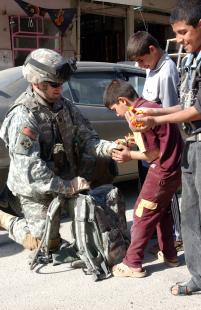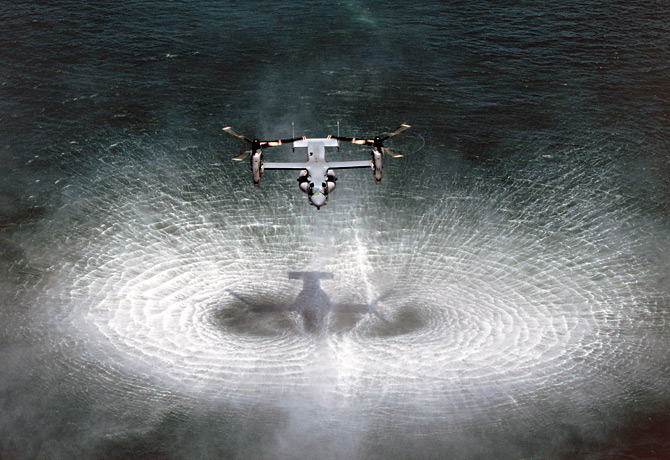In Concerning Snipers, Rules of Engagement and General Kearney, we discussed sniping being mainly an offensive operation, a notion fairly well removed from the framework of rules for the use of force and rules of engagement which focus on force escalation and allowable responses for self defense and force protection. The Washington Post published an article today that is sure to turn heads and educe the righteous indignation of the establishment.
A Pentagon group has encouraged some U.S. military snipers in Iraq to target suspected insurgents by scattering pieces of “bait,” such as detonation cords, plastic explosives and ammunition, and then killing Iraqis who pick up the items, according to military court documents.
The classified program was described in investigative documents related to recently filed murder charges against three snipers who are accused of planting evidence on Iraqis they killed.
“Baiting is putting an object out there that we know they will use, with the intention of destroying the enemy,” Capt. Matthew P. Didier, the leader of an elite sniper scout platoon attached to the 1st Battalion of the 501st Infantry Regiment, said in a sworn statement. “Basically, we would put an item out there and watch it. If someone found the item, picked it up and attempted to leave with the item, we would engage the individual as I saw this as a sign they would use the item against U.S. Forces.”
From a tactical standpoint, this would seem to be a fairly dubious approach, meaning that we cannot see a way to gauge success (perhaps an insurgent is picking up the weapons for the purpose of harm to U.S. forces, or perhaps rather than an insurgent, he is the head of a family picking up ammunition for the purpose of use with the single AK-47 he is allowed to have for self and home defense – how would we know?). However, here at TCJ, we smell a rat. Will enlisted men and lower level officers go down for programs born and nurtured way above their rank?
In documents obtained by The Washington Post from family members of the accused soldiers, Didier said members of the U.S. military’s Asymmetric Warfare Group visited his unit in January and later passed along ammunition boxes filled with the “drop items” to be used “to disrupt the AIF [Anti-Iraq Forces] attempts at harming Coalition Forces and give us the upper hand in a fight” …
Soldiers said that about a dozen platoon members were aware of the program, and that numerous others knew about the “drop items” but did not know their purpose. Two soldiers who had not been officially informed about the program came forward with allegations of wrongdoing after they learned they were going to be punished for falling asleep on a sniper mission, according to the documents.
Army officials declined to discuss the classified program, details of which appear in unclassified investigative documents and in transcripts of court testimony. Criminal investigators wrote that they found materials related to the program in a white cardboard box and an ammunition can at the sniper unit’s base.
“We don’t discuss specific methods targeting enemy combatants,” said Paul Boyce, an Army spokesman. “The accused are charged with murder and wrongfully placing weapons on the remains of Iraqi nationals. There are no classified programs that authorize the murder of local nationals and the use of ‘drop weapons’ to make killings appear legally justified.”
There is the rat that stunk so badly, served up to us from an “Army spokesman.” Of course there are no programs authorizing the “murder” of local nationals. Sniping the enemy is not murder. The responsible low level officer explained exactly the purpose of the weapons, i.e., as “bait.” Whether this is an effective approach can be debated (we called it dubious). But the argument has been framed by the “Army spokesman” in a way that presupposes that no one in higher levels of leadership would have approved this and thus these men concocted the tactic all on their own. It must be the fault of the lower ranking officers and enlisted men, the “spokesman” implies.
As for placing items near the bodies of alleged insurgents to justify kills, the story gets somewhat murky.
Spec. Jorge Sandoval and Staff Sgt. Michael Hensley are accused by the military of placing a spool of wire into the pocket of an Iraqi man Sandoval had shot on April 27 on Hensley’s order. The man had been cutting grass with a rusty sickle when he was shot, according to court documents.
The military alleges that the killing of the man carrying the sickle was inappropriate. Hensley and Sandoval have been charged with murder and with planting evidence.
As Sandoval and Hensley approached the corpse, according to testimony and court documents, they allegedly placed a spool of wire, often used by insurgents to detonate roadside bombs, into the man’s pocket in an attempt to make the case for the kill ironclad.
One soldier who came forward with the allegations, Pfc. David C. Petta, told the same court that he believed the classified items were for dropping on people the unit had killed, “to enforce if we killed somebody that we knew was a bad guy but we didn’t have the evidence to show for it.” Petta had not been officially briefed about the program.
In The Sniper of Tarmiyah, we advocated distributed operations and latitude for snipers to engage insurgents even if they were not brandishing a weapon or actively engaged in hostilities (this leaves a significant amount of latitude to the shooter and his NCOs who need to be trained to make these judgments). So under our schema, the “evidence” would never have been necessary and thus would not have been “planted.” To be clearer, while at TCJ we doubt the effectiveness of a plan that baits insurgents due to lack of certainty of who has been killed, we support the idea of snipers being given latitude to shoot outside of the strictures of self defense.
The Pentagon doesn’t buy into our schema, and so we are left with snipers feeling as though they need to “justify” kills in order to save themselves from prosecution. In the end, who will pay for this program?
Vela’s father, Curtis Carnahan, said he thinks the military is rushing the cases and is holding the proceedings in a war zone to shield facts from the U.S. public.
“It’s an injustice that is being done to them,” Carnahan said. “I feel like you can’t prosecute our soldiers for acts of war and threaten them with years and years of confinement when this program, if it comes to the light of day, was clearly coming from higher levels. . . . All those people who said ‘go use this stuff’ just disappeared, like they never sanctioned it.”
Certainly not the brass. Let’s be clear here about what is happening. In Concerning Snipers, Rules of Engagement and General Kearney, we provided a link to the book White Feather, the authorized biography of Marine Gunnery Sergeant Carlos Hathcock who had 93 confirmed sniping kills in the Vietnam war, more than any other in military history, and who to this day serves as an inspiration from the grave for all new sniper trainees in the Army and Marines.
Carlos Hathcock is the shining example of distributed operations. He was alone in the field for long periods of time, his decisions were tried and true, his investment in the kill extreme, and his knowledge of the enemy impeccable. This is the model for sniping, and as a military tactic, it brings risk – and conversely, very high payoff.
While not all snipers will be equivalent to Carlos Hathcock (perhaps none will), the problem is that we are witnessing the end of sniping as a military tactic. The rules of engagement prevent targeting the enemy in Iraq or Afghanistan if they do not fall within the precise stipulations (e.g., self defense, engaged in hostile acts, etc.). Within the current framework, we may as well end the sniper schools and rely on standard service rifle training of infantry. The number of sniping kills due to defensive operations doesn’t justify the expense of the schools.
The military establishment knows that many of the kills by past snipers such as Carlos Hathcock did not meet these stipulations. They know that there has been a sea change in the cultural acceptability of these necessary military tactics, and use of them – or failure to punish people who use them – could be career-ending for top brass. In this case, the top brass is running for cover and the lower ranks are left hanging out to dry, even when their plans were approved by top brass. Carlos Hathcock may have been heroic and an interesting and admirable artifact of military history, but sadly, his day is coming to an end.





